Defining Wire Strippers, Their Types and Applications
September 13, 2022
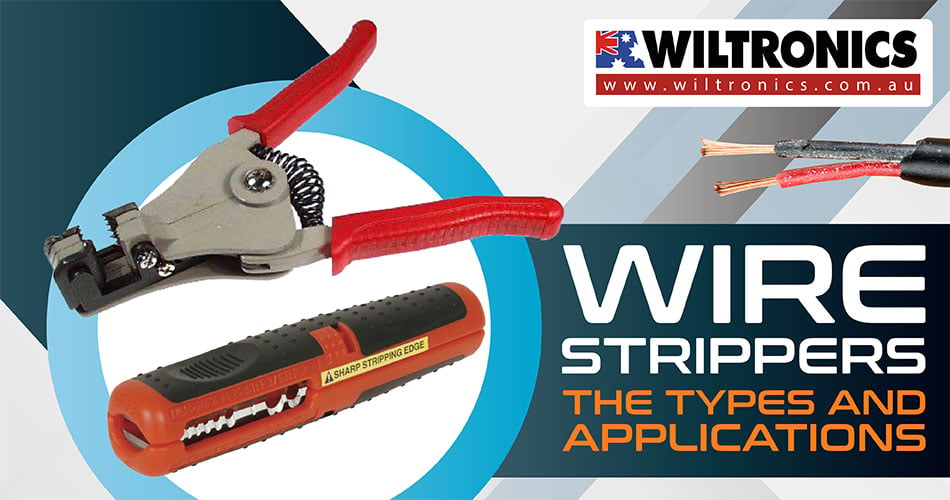
Electrical wire work involves cutting, and in most cases, you will need wire strippers.
Every DIYer and electrician makes regular use of the hobbyist tool known as a wire stripper. It is a must-have for any kind of electrical repair, with different types suited for each task.
Starting from the basics, everything you want to know about wire strippers is here! Know how this stripping device works, how to use it, and the variety available on the market.
What Are Wire Strippers For?
A wire stripper resembles a pair of scissors or pliers. It can perform several tasks, but its main purpose is to strip the insulation off the end of wires.
Simply put, it is a hand held tool for removing the protective covering of an electrical wire. Removing the jacket exposes the wire for repairs or new uses.
Stripping the end portions of a wire also allows for a new connection to terminals and other wires. This is accomplished with slotted cutting blades located in the jaws of a wire stripper.
The cutting slots are sized to fit various gauge wires, not the wire’s insulating coating. When a wire is pulled through the slot, the insulation is left behind.
The parts
Wire strippers are available in various shapes and sizes and are usually made of steel. Here are the basic parts:
- Crimpers for crimp connectors
- Ergonomically shaped handle
- Loophole to create hook or loop in a wire for screw terminals
- Small bolt shear (usually 6/32 and 8/32)
- Tip/nose for holding, twisting or creating hooks or loops in wire
- Various size stripping blade slots
- Wire cutter
Moreover, a wire stripper usually has serrated teeth, which are handy for stripping. The handles can also be either straight or curved, with a rubber coating for a secure grip.
In whatever form the tool takes, they feature labelled holes that match wire gauges. Usually from 10-gauge to 20-gauge.
Some holes can match different gauges for different wire types. For instance, the hole marked for 10-gauge solid wire can be the same hole you use for 12-gauge stranded wire. It is crucial to ensure you use the correct set of markings for the wire type you are cutting.
Types of Wire Strippers
As mentioned, there are various types of wire strippers for sale. The right variety will keep your job from becoming any more challenging than it has to be, so choose well!
1. Adjustable wire stripper
This type features a simple design, with a single notch in each blade. It comes with a stop screw that allows you to set the cut based on the wire thickness that needs to be stripped.
2. Gauge stripper
An easy-to-use wire stripper, making it popular with beginner electricians. The blades have holes matching wires of different gauges. This makes the stripping job simpler and quicker, with no adjustment necessary.
Some can work as a cutter or crimping tool, making them suitable for different types of wiring jobs. There is a limit to the number of gauges on a single wire stripper, though. It is best to buy more than one just in case.
3. Self-adjusting stripper
Using this stripper lets you adjust to wires of different thickness levels. It makes the work go much faster since there is no need to make manual adjustments.
For added convenience, choose one with a built-in crimper or cutter.
4. Gauged automatic wire stripper
This has the qualities of a self-adjusting stripper and gauged stripper. You can choose the suitable gauge for the wire, and after cutting, it returns to the open position.
The gauge automatic type is more expensive, but the benefits make it a good investment.
5. Laser wire stripper
This type is a computer-controlled machine that uses a laser to burn off the wire insulation. Laser strippers are often used for fine gauge wires as they do not cause damage to the conductor.
A CO2 laser wire stripper, for one, should be able to strip the insulation from any size wire.
6. Manual stripper
A US-style simple manual wire stripper is a pair of opposing blades much like scissors. The addition of a centre notch makes it easier to cut the insulation without cutting the wire.
How to Use a Wire Stripper
The process for stripping wire is the same with each tool type. Regardless of what version you are using, the steps below should work fine.
Step 1: Determine the wire gauge and type
Identify the gauge of the wire you need to strip. Look for the outermost sheathing that binds wires together inside an NM cable. NM stands for a nonmetallic sheathed cable.
Suppose the number is 12/2. The first number is the wire gauge—in this case, 12. Also, it is worth noting whether the wire is solid or stranded copper.
Step 2: Match the wire to the tool
Match the wire gauge with the right labelled hole on the wire stripper. You have to be extra careful on this one.
Choosing a hole that is too big means you will have a hard time stripping the insulation. In contrast, a hole that is too small can cause the wire to be nicked or completely damaged.
Step 3: Open the stripper and seat the wire
Open the wire stripper handles and “seat” the wire into one side of the proper hole. Gently press the handles together until they can go no farther. This will cut through the insulation on the wire.
Step 4: If necessary, twist the tool
If the wire insulation does not fully cut, slowly rotate the wire within the hole. Alternatively, the wire stripper around the wire.
Rotate a quarter turn in one direction and back.
Step 5: Strip the insulation
Pull the stripper towards the cut end of the wire to remove the insulation. Push against the tool using your thumb that is gripping the wire. Use your other hand to hold the handles firmly shut.
Features to Look For in Wire Strippers
So, what exactly makes a good pair of wire strippers? When finding the best tool, you want an easy-to-use, functional, and reliable one.
There are a few features to consider to make your investment worthwhile and, of course, to fit your needs.
The grip
A wire stripper with a comfortable grip can be a pretty easy tool to use. You will want a high-quality handle that lets you strip the insulation without hurting your hand.
Those with rubber grips are highly recommended.
Guaranteed ease of use
Besides a good grip, the right wire stripper should do the job, well, easier! Unlike creating a makeshift using a knife, the process has to be hassle-free.
With this, you can choose between an automatic or manual type. Automatic strippers are easiest to use, while manual ones will need more effort.
But if you want more precision for smaller wires, go for a manual wire stripper.
Promises safety
With any electrical work, safety is a must. Thus, you will want a good pair of strippers to keep you safe.
Look for a unit that provides a good amount of stability and control while in use. Of course, you need to feel confident while using the tool and working on the task.
Reading the directions before getting started also helps!
With the right precision
Top-quality wire strippers allow for the best precision. Make sure that the cutting edge on your wire stripper works well before use.
Multi-functional qualities
Most wire strippers double as wire-cutting tools. If you often need to cut wires as well, getting a versatile stripper is a great idea.
Other features to consider:
- Well-defined wire gauge markings
- Return spring for the handles
- Locking handles, particularly for spring models, so they do not get dull in the toolbox
- Bright colours to help prevent losing them
Get Your Wire Strippers Here!
Get your handy tool for electrical work with a wire stripper—then put it in your toolbox after use.
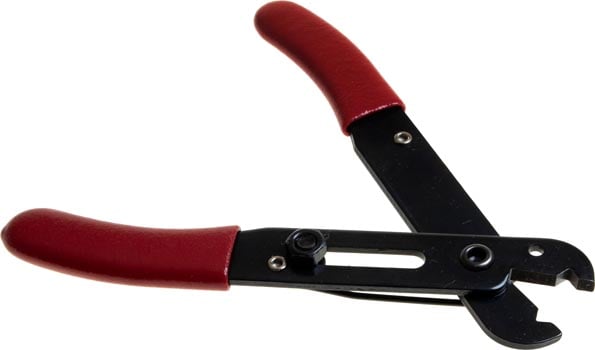
Economy Wire Stripper
Product code: TL5030
These economy wire strippers are fully adjustable and simple to use. Designed with a wire looping hole and length scale and low carbon steel, black oxide spring.
The hardened jaws incorporate cutting and stripping blades.
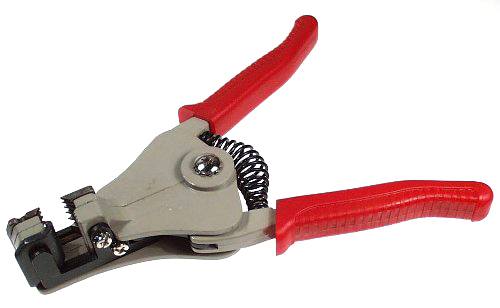
Heavy Duty Wire Stripper Tool
Product code: TL5020
This heavy duty wire stripper tool features a selectable depth function. As a result, they can be set from 1.0mm to 3.2mmsq.
Easy squeeze, spring-loaded. Even better, with an adjustable cutting depth so you can get it right every use.
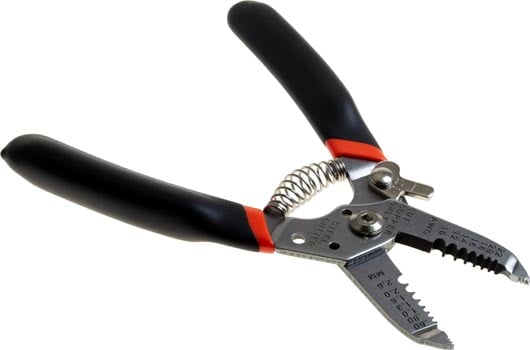
Universal Wire Stripper 3-in-1
Product code: TL5035
This universal wire stripper has a 3-in-1 function. It includes a wire cutter, pliers and a loophole to bend hooks in wires.
It is spring-loaded with locking jaws and has soft rubber handles for added comfort. Made from high-quality toughened steel.
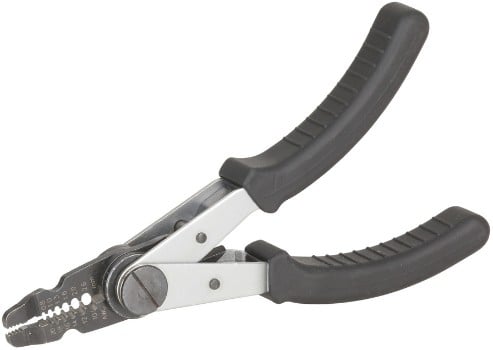
Wire Stripper and Cutter – Multi Function Hand Tool
Product code: JTH1843
This multi-functional stripper makes wire stripping, cutting, and crimping easy! A 6-position wire stripper is suitable for 10-20AWG insulated wire with a micro-grip jaw.
Simply flip the handles around to turn them into a side cutter and crimper!
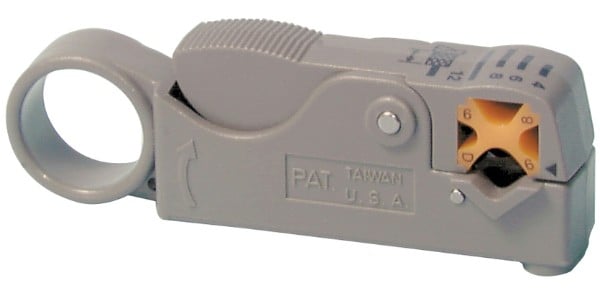
Rotary Coax Cable Stripper Tool RG58/59/62/6
Product code: TL1032
This rotary coax cable stripper works well with RG58/59/62/6 and 3C2V 75 ohm cable. It works by stripping the outside jacket and inner conductor in one operation.
Simply rotate the stripper clockwise around the cable 3 to 6 times. A quality stripper suited to installers.
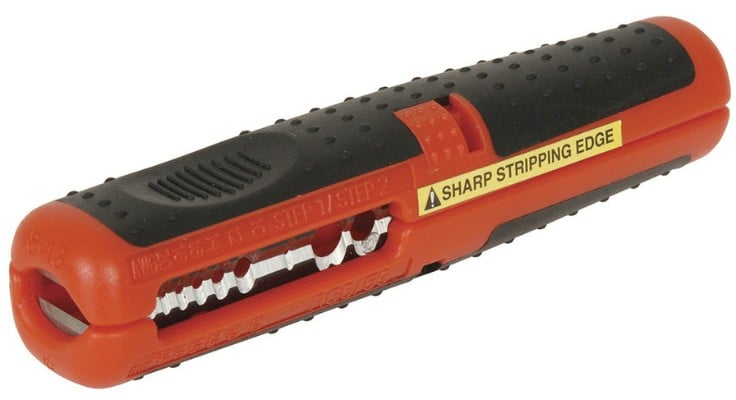
Pocket Wire Stripper
Product code: JTH1817
This pocket wire stripper can strip wires ranging from 2G to RG6 coax. It is simple to use and small enough to bring with you wherever you go.
Getting the right tools is essential for any type of project—and electrical work is no exception. For one, poor wiring can cause injury or lead to property damage.
Working with wires requires a quality, durable tool, and wire strippers are up to the task. Your choice of wire stripper should also depend on the volume of work you will be doing.
© Electrotech Brands Pty Ltd 2022


Write a Comment
You must be logged in to post a comment.